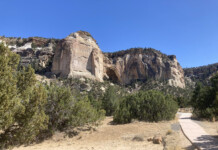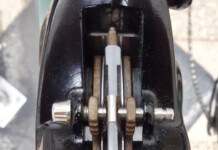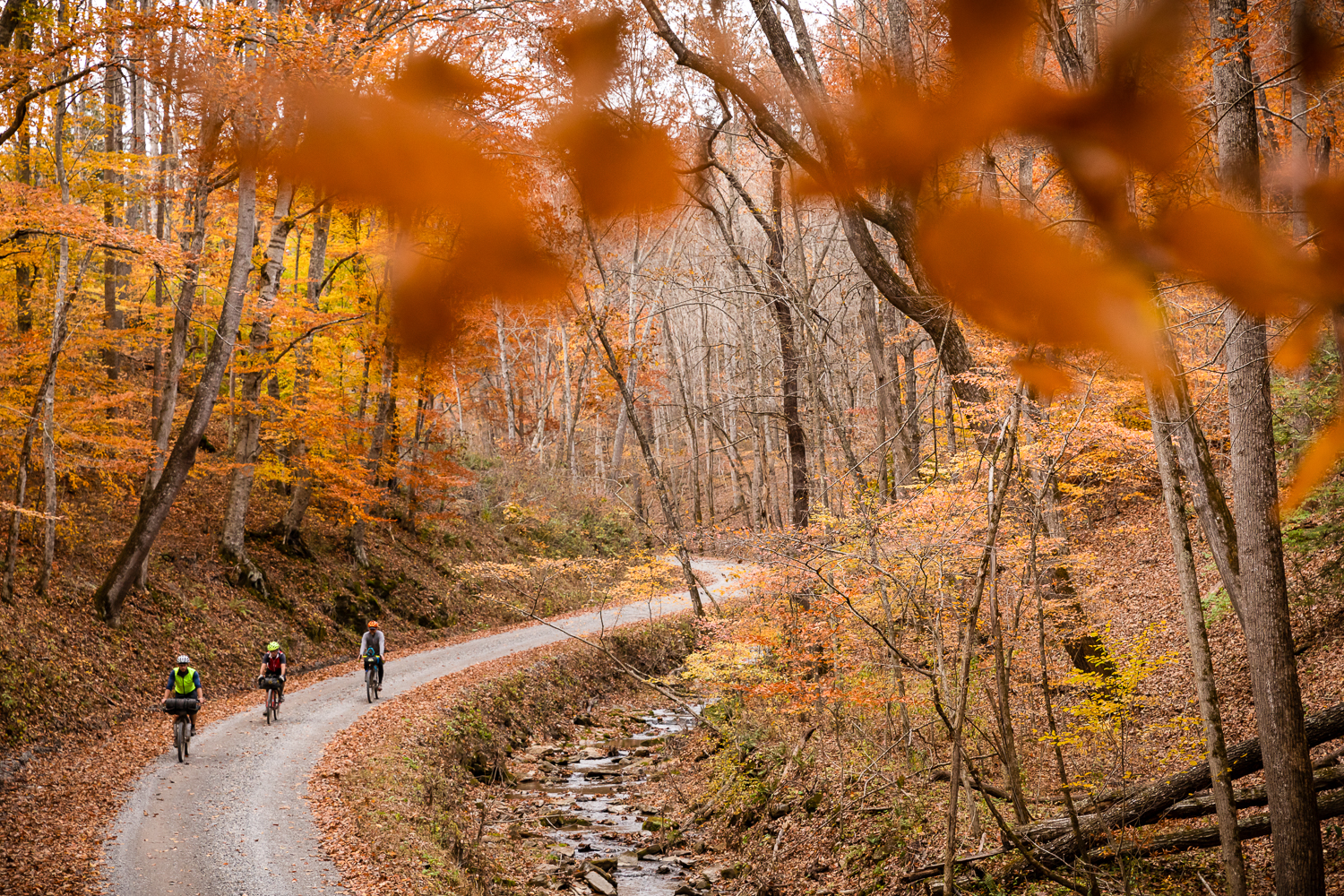By Tom Diegel — So, you got yourself a new dedicated bikepacking rig, or maybe you finally got around to getting a 27.5 wheelset with bigger tires that barely fit into your gravel bike frame. You’ve figured out how to get more water bottles onto your bike despite getting a sweet frame bag, and you’re trying to figure out which gear and how much weight should go into your oversized seat bag or the oversized handlebar bag. You’ve spent way too much time at bikepacking.com trying to decide which routes you want to do, and spent too much money on a light sleeping system. There are potentially some electronics to ponder: lights – big or small? a navigation computer that doesn’t burn battery juice the way your phone does? InReach for when you’re really out there and things go awry? A battery brick or a dynamo hub to power it all? There are lots of things to consider. But one particularly important and fundamental gear question that people may overlook: what shoes to wear?
“What do you mean?” you ask. “I’m a cyclist, and I have road shoes and mountain bike shoes. This is more like mountain biking, so I’ll use my mountain bike shoes!” And the answer is … yes, maybe! Bike touring (which I generally consider to be road or easy gravel riding, in more civilized environments) and bikepacking (which likely consists of more challenging gravel/dirt roads or double tracks in more remote areas, and—if you’re lucky, plan well, and have the right bike/gear—good solid singletrack) both can have an important aspect to them that you may not be as familiar with: walking! Bike touring—even in the relatively sparsely populated Intermountain West—can consist of a lot of time checking out local points of interest: think Golden Spike National Monument, a national park’s visitors center, a local museum, wandering around a cool little outback town, going out to a diner breakfast, etc. and you definitely don’t want to be doing that in your cleated road shoes, and even rigid-soled mountain bike shoes with ratchet or BOA closures and molded plastic outsoles worn slick and the Shimano cleats that are sticking out make for terrible strolling-around-town footwear.
If you’re bikepacking, keep in mind that you’re mountain biking with extra weight, and climbs that you can make normally may not be viable with an extra 20 pounds of gear and food on your bike, and many times desert or forest gravel roads don’t bother with the nice 6% singletrack you are accustomed to at the ski resorts; for old time efficiency’s sake those old school roads can go up at 10, 15, even 20 or 25 percent grades, sometimes on loose gravel. So yes, you may be pushing your bike uphill, and it may be on loose gravel, slickrock, or a combo of dirt and embedded rock, and having shoes that are at least somewhat walkable is handy.
Yes, mountain bike shoes have walkable soles, but the higher end models use plastic soles instead of heavier rubber to keep the weight down, and even those higher end models that use Vibram’s cycling shoe rubber, for example, use a compound that sacrifices traction for durability. And the plates that give the shoe the stiffness for ultimate efficiency don’t flex with your foot at all; on one long bikepack steep hike-a-bike—before I knew any better—I put a quarter-sized blister on my heel very quickly because my heel was doing the moving, not the shoe.
Additionally, there’s a bit of a liability factor: the extended lengths of time for your rides that take you into increasingly remote, unforgiving terrain means that when you do taco a wheel, use your last patch or bacon bit, rip your tire’s sidewall, snap your derailleur, break your pedal, or your crank falls off (all of which have happened to me) you might be doing a lot of walking, and having a shoe that’s at least moderately walkable can be a big game-changer in those situations.
Of course, one easy answer is to bring another pair of shoes! This may work out if you’ve got pretty small feet and are on a short trip, but if you wear a men’s 12 your spare camp/walking shoes will fill up most of a pannier and all of a big seat bag! Yep, flip flops may fit better, but even those can be a bit big and bulky for a lean bikepacking tour when weight and space is at a premium, so having one pair of shoes that you ride in all day and then wear around camp or stroll around the museum when you’re off the bike can be helpful.
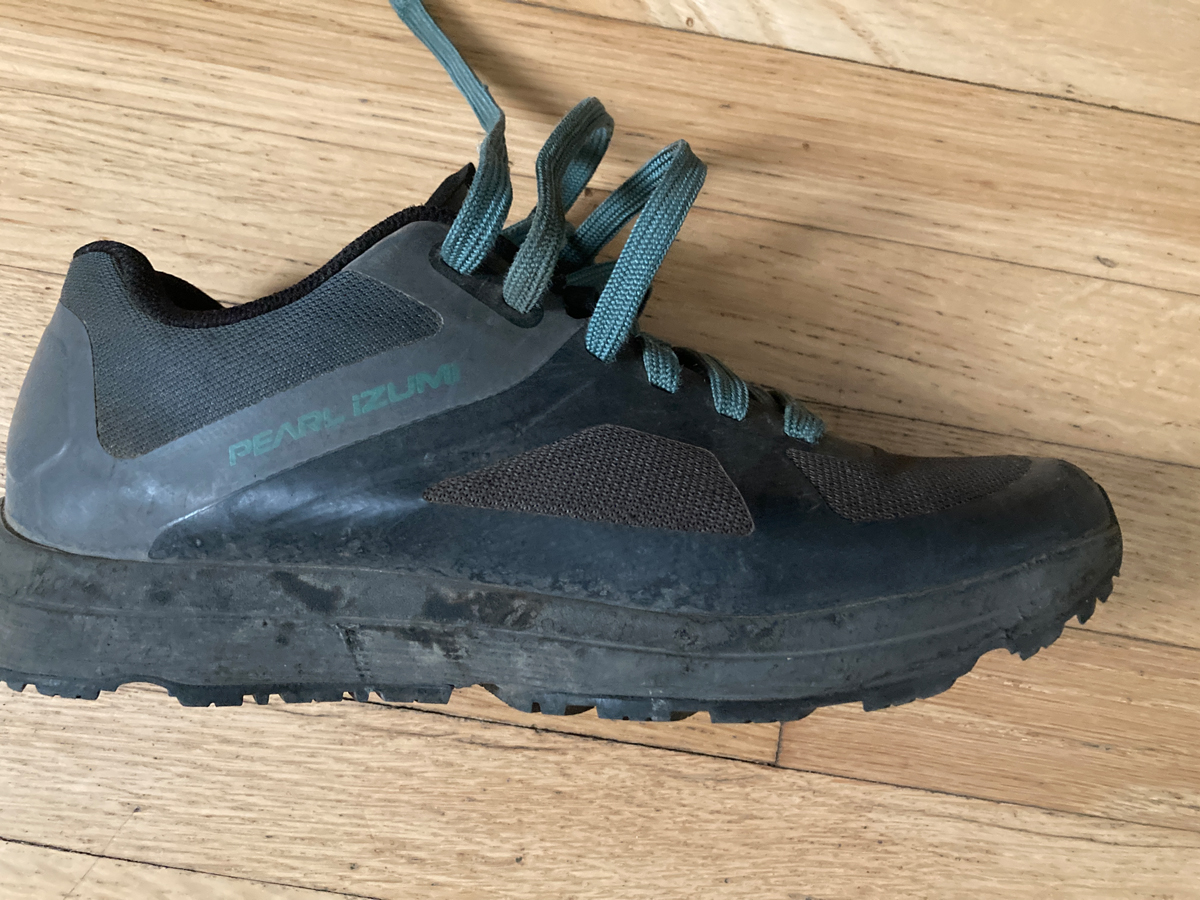
What then to use? For once in the cycling world the answer could actually be a cheaper product. Good road and mountain bike shoes now range from $200 to $400 or even more. All of the big brands are also offering simpler shoes using nylon plates that are not quite as stiff nor as light as carbon plates, with generic rubber soles. These shoes actually allow a bit of toe flex and are typically priced in the low to mid $100 range. If you stay away from the fancy ratchety and dial gizmos and opt for the same laces that work just fine on your running shoes, you can find a few cycling shoes priced at or close to $100, such as the Giro Rumble and Pearl Izumi X-Alp.
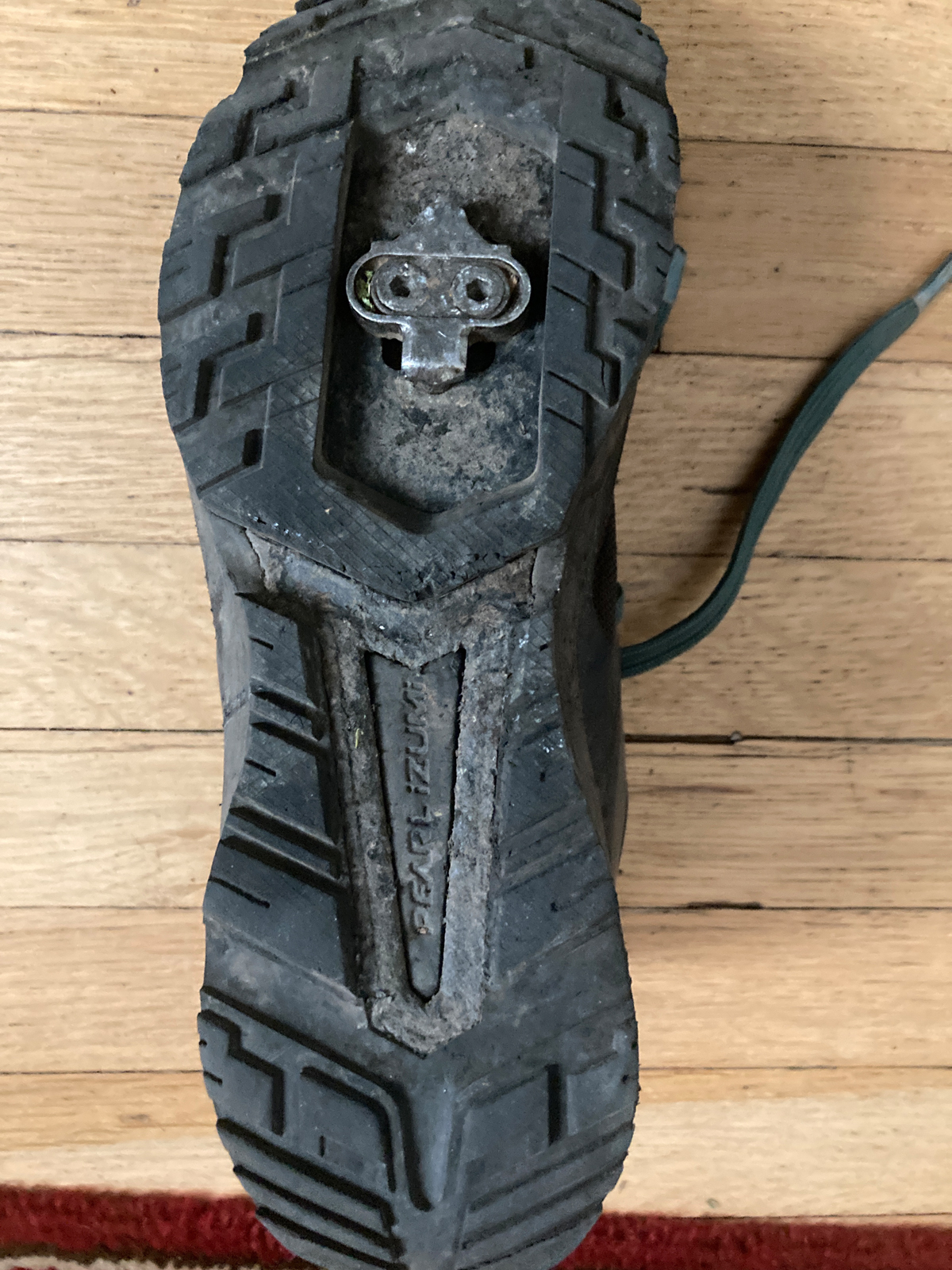
These options are perfectly suitable, even as you scroll past the many far-cooler styles on the Competitive Cyclist page. Many times, these already-cheaper shoes are also on sale because manufacturers have a hard time marketing them. Usually, these shoes are built on a last that has a roomier fit, which becomes more valuable as the long days start to stack up on a good tour. Additionally, this genre of shoes typically has their cleats slightly more recessed, so they don’t click on or scratch floors nor – importantly – grease off rocks easily the way more-exposed steel cleats do.
Five Ten’s MTB shoes and their competitors are an interesting option, since they sort of walk the line between a casual skate-inspired shoe and a cycling shoe. I must confess that I have never used this style, mostly because while Five Ten soles are sticky so that they stick well to platform pedals, the lug patterns on the soles aren’t deep enough nor widely-spaced enough to provide the traction that I think I’d want for pushing/carrying my bike up a long scrabbly double track in the desert.
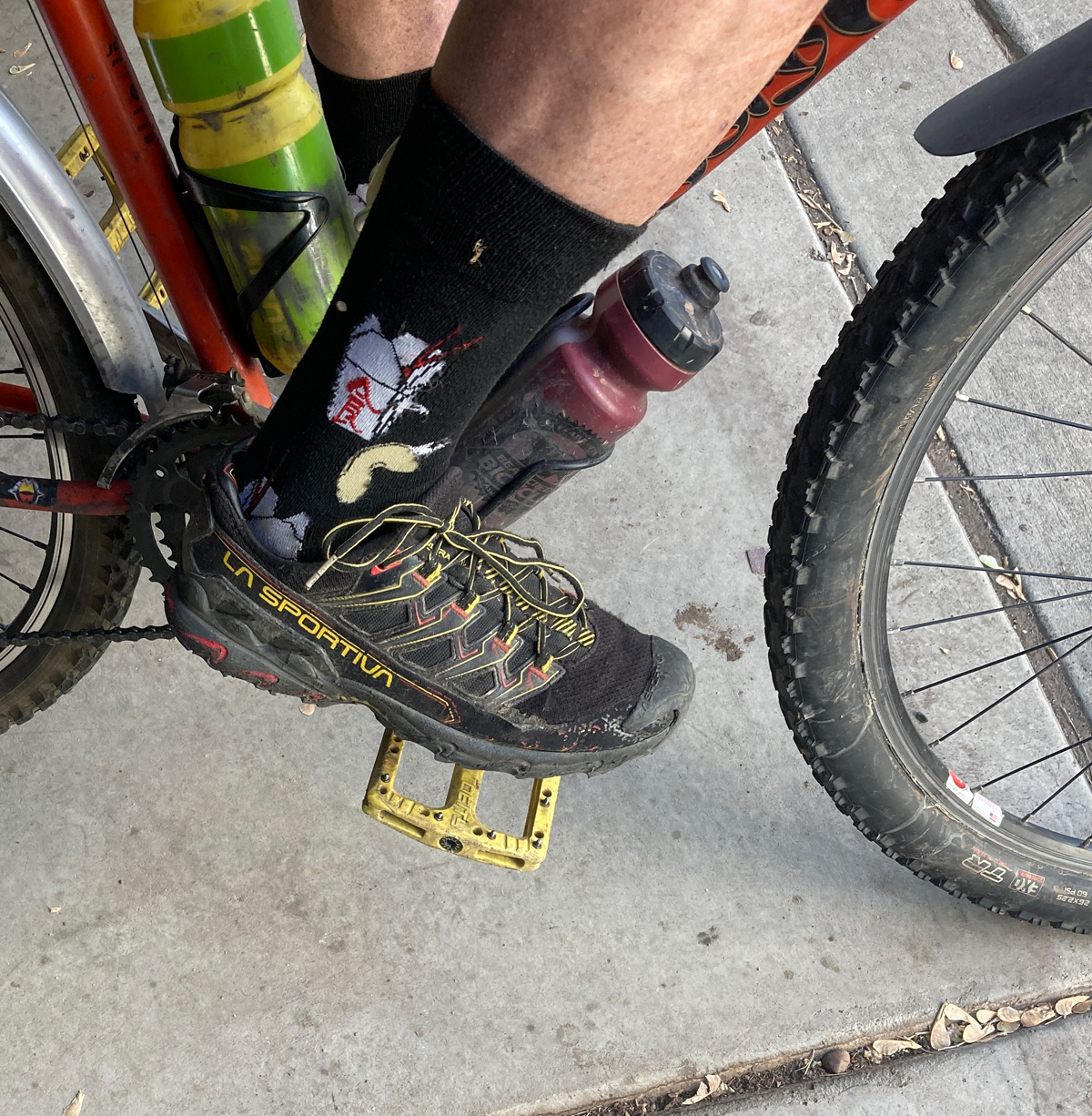
That said, the proliferation of flat pedals into the “real” mountain bike world intrigued me enough that last year I got a pair for an extended tour; it was the first time I’d ridden non-clipless pedals in over 25 years. I realized that the new-school flat pedals are so wide that they don’t really allow the foot and shoe to flex over the pedal, so there’s not much loss in efficiency nor risk of Achilles tendonitis, and a running shoe with a rock plate like a La Sportiva Ultra Raptor or a Brooks Cascadia or a “light hiker” ala a Merrell Moab or Keen Targhee that have slightly stiffer midsoles and relatively sticky rubber soles with good lugs that will grab onto pedals’ little metal prongs just fine and provide good traction when pushing. And for performance geeks, if you Google “flat pedals vs clipless” you’ll see that there is actually little to no difference in pedaling efficiency and bicycle speed using flat pedals or clipless.
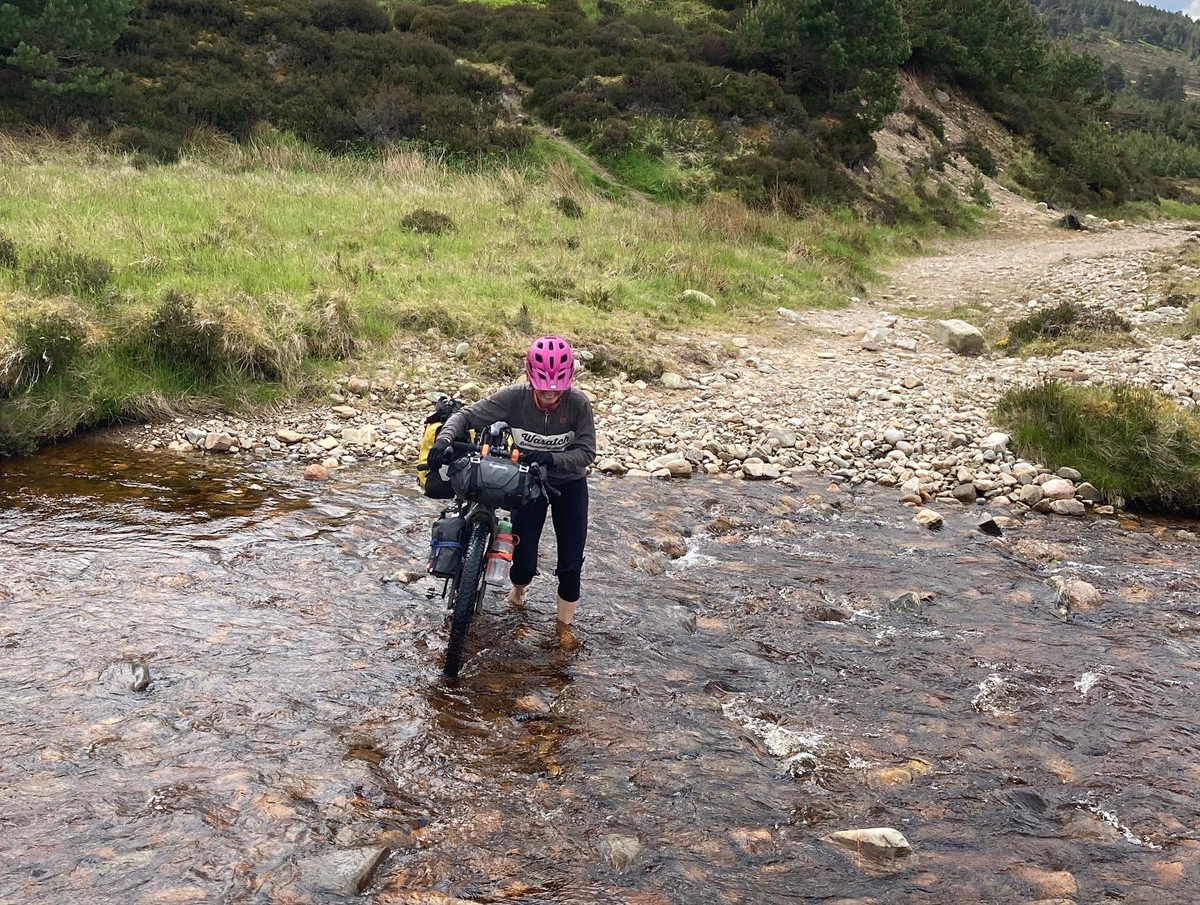
Therefore, with a flat pedal and an unconventional shoe that provides more versatility you’ll effectively have a good cycling set up that’s not only totally walkable and doesn’t have a metal cleat on it that will slide off a slippery rock on a creek portage, but also dries fast after that wet crossing and you don’t feel like you have to get the shoes off as soon as you hit camp. And if you find yourself inside a typical national park that has lots of great trails but the only ones legal to ride are paved bike paths, you’ll have perfectly adequate shoes to go for the amazing hikes to the big arches, the waterfalls tumbling into perfect swimming holes, and out to the dramatic canyon overlooks.
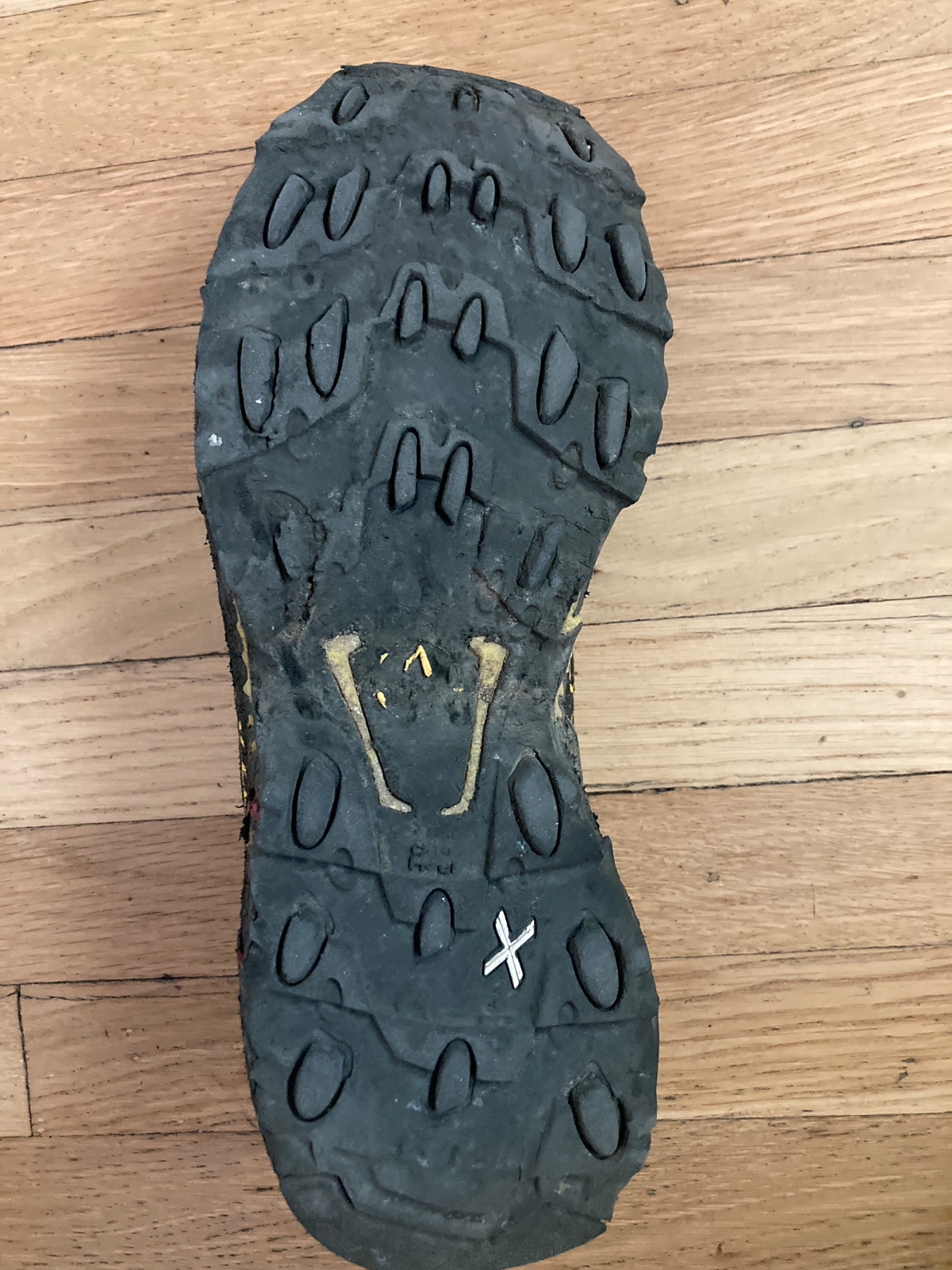
If indeed you are going to be riding most of the time and/or you’re just so comfortable with clipless pedals that you can’t quite fathom flats, the backpacking and minimal footwear worlds are out there with super minimal sandals. These aren’t one-pound-each Chacos; think super minimal things that are so light and compact you don’t even notice them in your kit. Bikepacking.com actually just did a review of some that are in the few-ounces and quite-compactible range. Or you can DIY: with a footbed and some paracord you can have moderately protective “footwear” for approximately $0 and weigh in at <2 ounces!
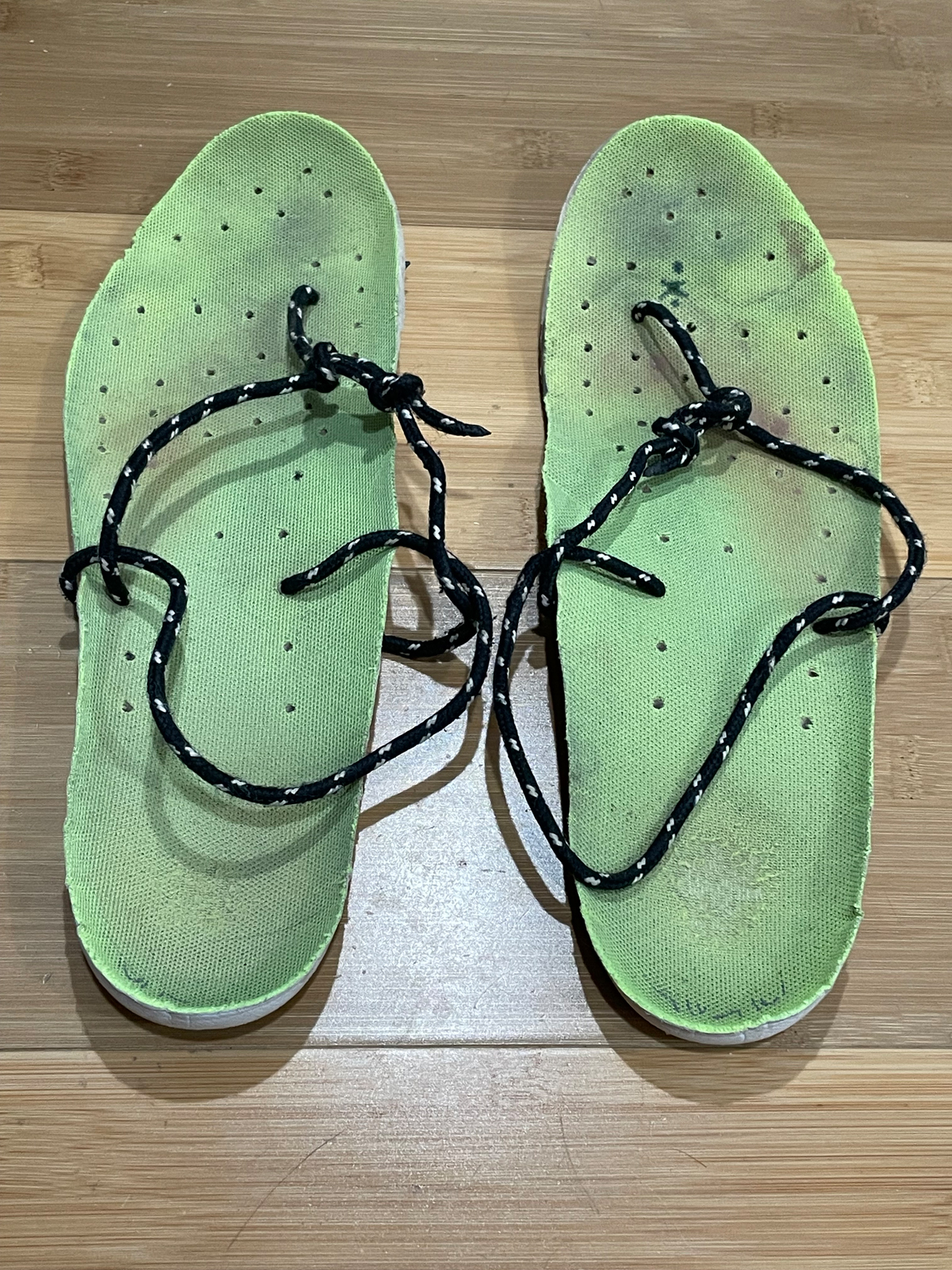
So as you start kitting yourself out for farther flung, multi-day, bike-based adventures in the desert, the woods, or even in Provence or Tuscany, give some thought to the type of terrain you’ll be on, your potential for walking around town, pushing up steep loose trails, lounging at camp, and/or getting lured into beautiful hikes. Then choose your shoes carefully!

